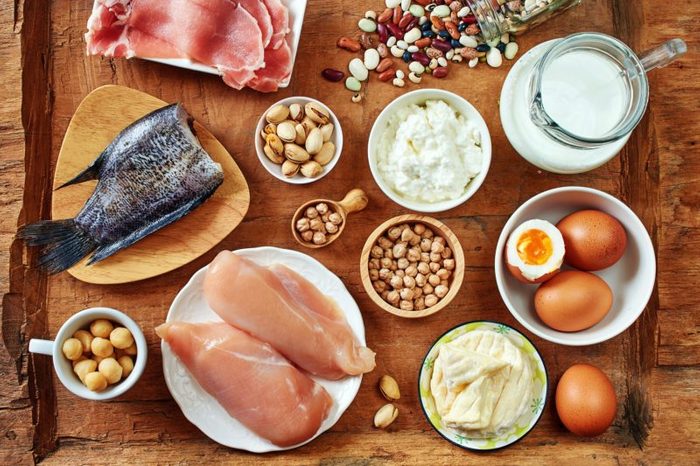
Foods that could make you sick
Nearly everyone has had food poisoning at least once. Every year, about one in six Americans will get sick from a contaminated meal, according to the Centers for Disease Control and Prevention (CDC). Food poisoning can even be life-threatening, though the common symptoms tend to be cramping, diarrhea, and vomiting. Not fun.
You know that undercooking poultry or ground beef can raise your risk, but there are other foods that can expose you to the bacteria—E. coli, listeria, and salmonella and more—that can have you retching. We spoke with food experts who revealed the unexpected foods that can give you food poisoning, and how to avoid them. You may also want to check out the 7 signs of food poisoning everyone should know.
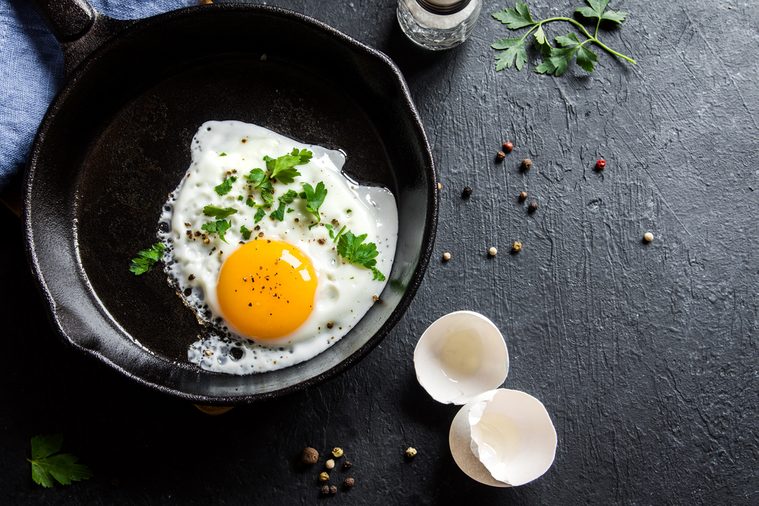
Sunny-side-up eggs
What’s not to love about an oozy egg, especially over biscuits and gravy or a corned beef hash? Potential salmonella infection, that’s what. Salmonella is among the most common causes of food poisoning. It can turn up in your egg courtesy of an infected laying hen.
How to avoid food poisoning: The risk is relatively rare, but if you’re feeding little kids, the elderly, or anyone with a compromised immune system, cook the egg thoroughly to kill off any dangerous bacteria. Opt for hard-boiled, thoroughly scrambled, or over-well eggs. Another option, says Francisco Diez-Gonzalez, PhD, professor and director of the Center for Food Safety at the University of Georgia in Griffin, is pasteurized eggs. The U.S. Department of Agriculture (USDA) has a service that allows you to submit questions about eggs, meat, and poultry and get a response any time of the day or night.
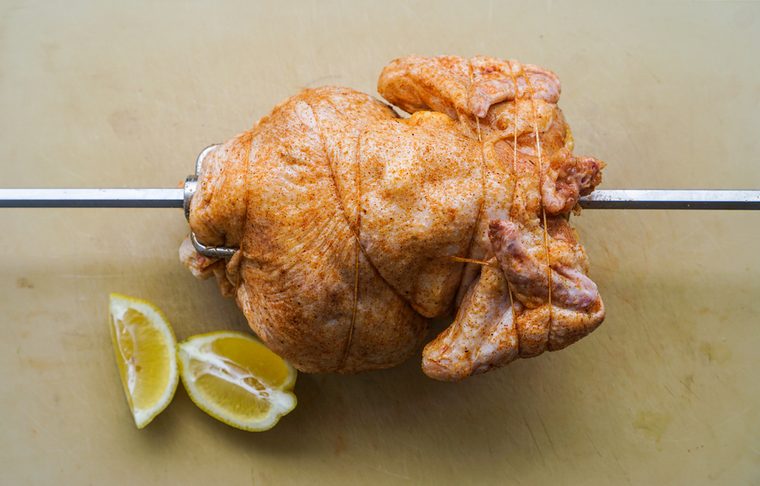
Rotisserie chicken
A piping-hot rotisserie chicken from the grocery store is a quick and tasty meal—just be sure to eat it while it’s still hot. If you leave it on the counter for a couple of hours, any bacteria on the bird could begin to flourish. (This is true if you roast your own chicken, as well.) “You have to assume that the raw chicken and its juices are contaminated,” says Patricia Griffin, MD, chief of the CDC’s Enteric Diseases Epidemiology Branch, and act accordingly.
How to avoid food poisoning: Bacteria can double every 20 minutes at room temperature; keep your food out of the danger zone—between 40° F and 140° F—until you’re ready to eat it. If you left the chicken on your counter for more than two hours, you’re best off throwing it out.
“Cut up the rotisserie chicken in pieces so they cool quickly to a safe temperature,” says Marianne H. Gravely, senior technical information specialist at the Food Safety and Inspection Service at the USDA.
If you’re cooking your own roasted chicken, don’t wash it—you’ll only spread germs. Instead, focus on cooking it to the right temperature. According to the USDA Meat and Poultry Roasting Chart, the bird should be cooked until the internal temperature is 165° F, which amounts to about 20 to 30 minutes per pound (with an additional 15 to 30 minutes if it’s stuffed) at 350° F. If you’re not sure why your stomach is feeling off, here’s how to tell the difference between a stomach bug and food poisoning.
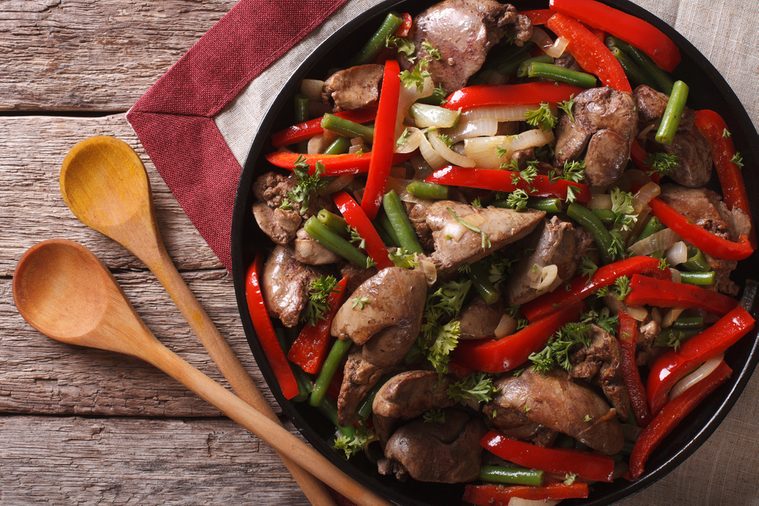
Chicken liver
Some people may choose to chicken liver on the underdone side, but that could be a very risky choice, explains Dr. Griffin. It’s still chicken, and the livers can be loaded with the bacteria campylobacter, she warns.
How to avoid poisoning: Be wary of recipes and menu items that recommend preparing the delicacy “lightly sautéed.” The livers should reach an internal temperature of 165° F and have a crumbly texture.
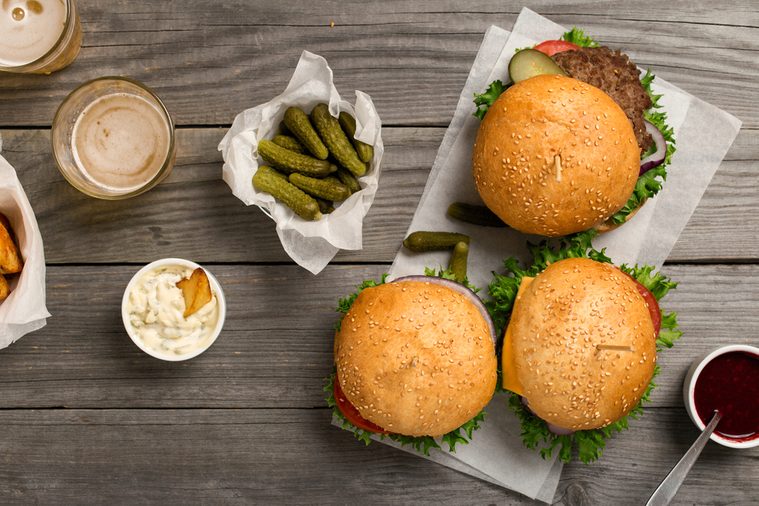
Burgers
Ground beef, pork, and poultry can be problematic because any pathogens on the surface before its ground ends up getting into all those little nooks and crannies. What’s more, they may escape death, even as the surface areas of the patty look hot and toasty. As with any meat, points out Gravely, “color is not a reliable indicator of doneness.” For example, sometimes beef can look a bit pink, she says, even if it’s cooked to a safe temperature. “And sometimes it can look brown when it’s not a safe temperature.”
How to avoid food poisoning: A food thermometer is a must. Ground beef and pork must be cooked to at least 160° F. Ground turkey—which is particularly tricky because it looks less pink even in its raw state—and chicken should be cooked for 165° F, according to the USDA’s Safe Minimum Cooking Temperature Guidelines. Don’t miss these other common summer BBQ foods that can cause food poisoning, too.
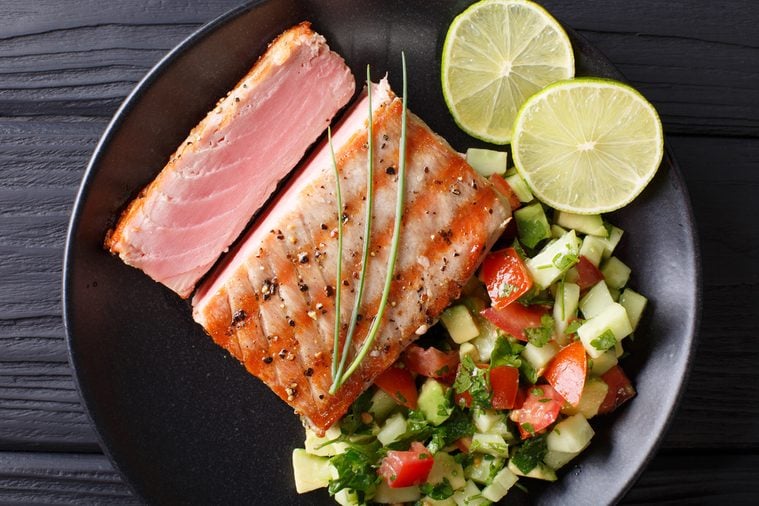
Tuna
If it smells okay, it’s probably okay, right? Wrong. When raw fish isn’t stored properly before it’s cooked, it can develop scombroid poisoning—a type of food intoxication, according to the U.S. Food and Drug Administration. For example, tuna is especially prone to this type of toxicity (other culprits include bluefish, mahi-mahi, and abalone). Infected fish can taste burnt or peppery. In addition to the regular gastro-misery, you may experience a rash on the face and upper body, flushing, and sweating.
How to avoid food poisoning: Order fish only in reputable restaurants. When you cook your own, bring the fish into the refrigerator as quickly as possible (so when grocery shopping, pick up the fish last, stick it into a cooler in your car, and go directly home). Raw fish should be cooked to 145° F. Leftovers should be reheated to 165° F and eaten within two days.
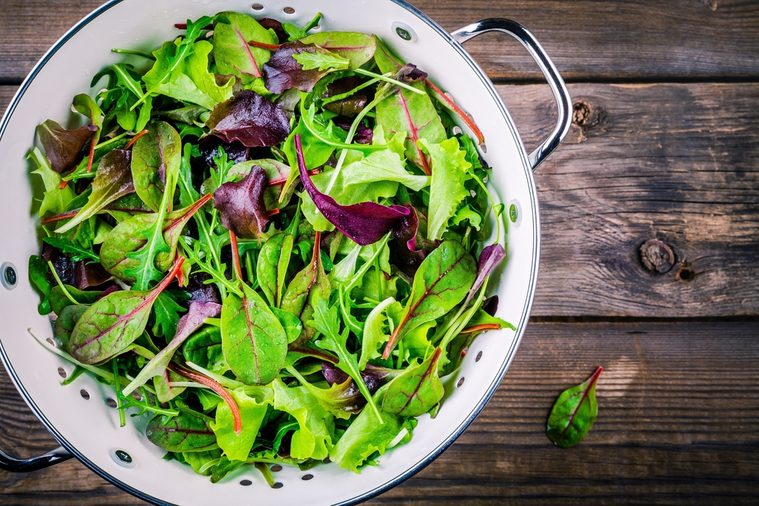
Leafy green salads
Consider this not an excuse to skip your vegetables, but an important reminder to wash (or cook) them well before eating and staying aware of recalls. Leafy greens are particularly tricky because they’re eaten as salads and not cooked—so proper washing is essential. After all, farms are not pristine: potential pathogens are everywhere, including in bird poop, fertilizer, ticks, tainted water, or as the result of poor hygiene. Note that the FDA says that packaged greens that are labeled ready-to-eat or pre-washed don’t require further washing.
How to avoid food poisoning: Some bacteria can stick to the lettuce and even get into it, says Dr. Griffin So washing won’t guarantee a bacteria-free leaf, but it can knock off dirt and reduce the risk of germs. Place the odds in your favor by buying greens that are in the best possible shape. “Look for leaves that are firm and crisp,” says New York City nutrition coach Maria Marlowe, author of The Real Food Grocery Guide. For packaged lettuce, avoid the slightest sign of sliminess—”bacteria can spread quickly,” she says. For fresh herbs, she says, “make sure the leaves are firmly attached to the stem and have no sign of brown or black spots.” Finally, triple-wash your lettuce before you eat it. “Don’t just rinse it, ” she says, “but fill a large bowl with cold water, tear the leaves into the bowl, submerge and swirl with your hands for a minute or two, then lift the leaves into a strainer and dump the water.” Repeat twice more, then wipe or spin dry. Here’s what to do if you accidentally eat mold.
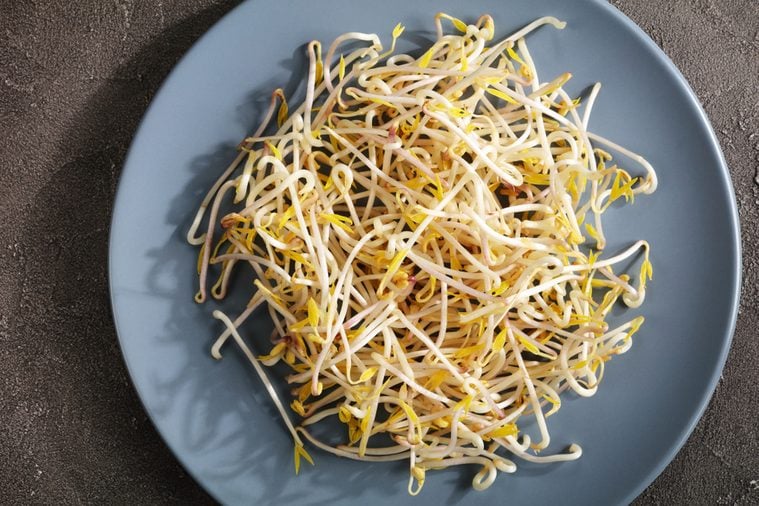
Sprouts
The sultry environment needed for a seed to sprout and grow is also the condition of choice for bacteria. “The contamination happens typically in the seed, and when it starts to sprout the bacterial cells also get inside the plant, so washing the surface may not necessarily help,” says Diez-Gonzalez.
How to prevent food poisoning: As of yet, there’s no 100-percent foolproof way for rendering raw sprouts pathogen-free. Your safest bet is to cook them before eating them, or skipping them altogether. Don’t miss these 10 food poisoning myths you can safely ignore.
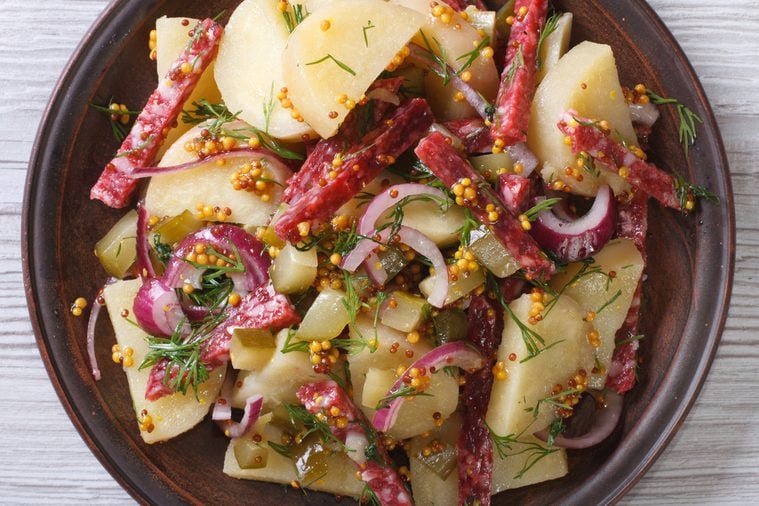
Potato salad
A whole host of microscopic critters can grow in improperly handled potato salad—especially if you get it at a deli, where cross-contamination with deli meat and cheese can occur. Contrary to popular belief, the problem is not the mayonnaise, says Gravely—it’s the potatoes. “When vegetables are cut up, there are more surfaces exposed to potential pathogens,” she says, ” and the potato is cooked and soft as opposed to raw and hard, which also makes it more accessible to bacteria.”
How to avoid food poisoning: Purchase your potato salad at a clean, reputable place, keep it chilled, and consume it within three days.
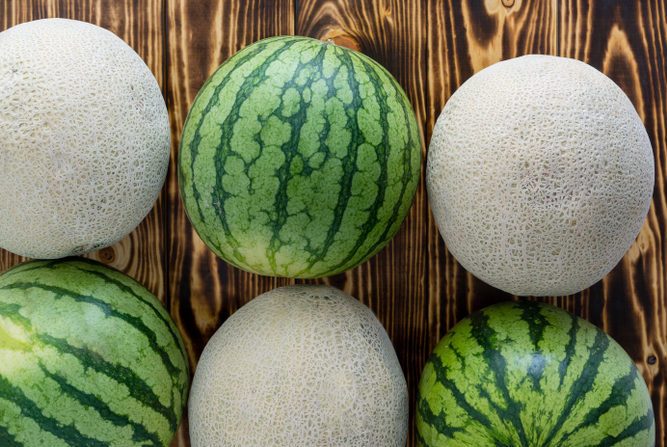
Melons
A few years ago, a massive cantaloupe recall traced the problem to water contaminated with listeria in the packing house. The trouble with melons—as well as other fruit with a tough peel—is that, because you don’t eat it, you may be a tad lackadaisical about cleaning it. But once you’re slicing through it, your knife can pick up any pathogens and pass them onto the edible portions.
How to avoid food poisoning: “Don’t just rinse your cantaloupe, scrub it down and wipe it dry before you cut it open,” says Diez-Gonzalez. And after you slice it up, store the melon in the fridge and plan to polish it off within three days (or toss the rest). For more food safety strategies, download the Foodkeeper app created by the USDA, Cornell University, and The Food Marketing Institute. Make sure you follow these rules this summer to avoid food poisoning.
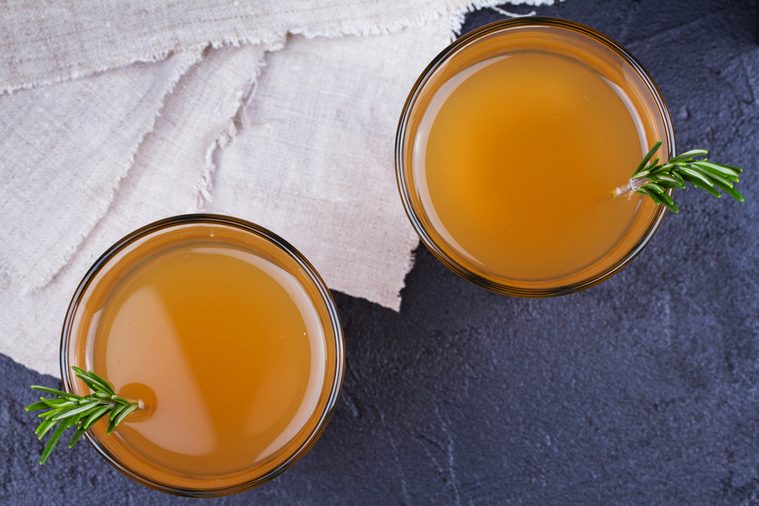
Apple cider
It may be tempting to stop by a roadside stand to try the fresh cider—especially if you’re with kids who are “so thirsty”—but proceed with caution. When apples (and other fruits) are pressed, any bacteria on the outer surface can get into the juice.
How to avoid food poisoning: While healthy adults can fight off the illness, kids, the elderly, and anyone with a weakened immune system may not. To be safe, ask if the juice has been treated for safety, says Dr. Griffin. If not, head to the supermarket and look for a carton that indicates the juice has been pasteurized.
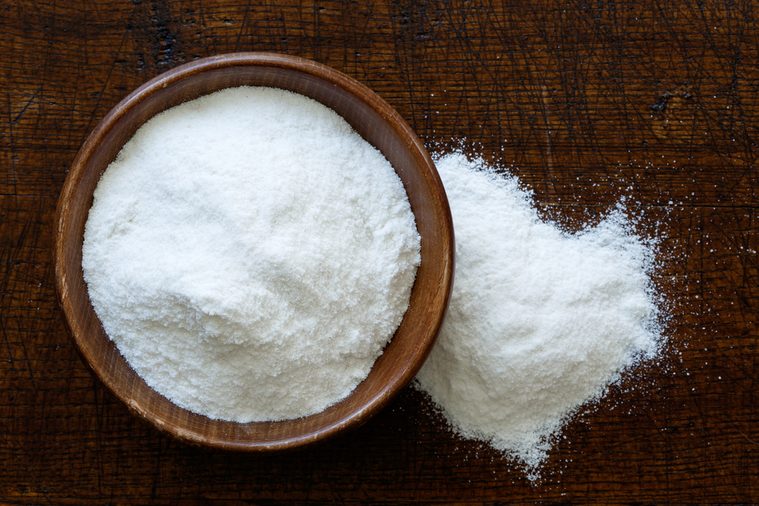
Flour
Flour is ground grain: Raw flour hasn’t been treated to kill bacteria. The cooking step is the kill step. That’s why even eggless batter and dough are still potentially risky.
How to avoid food poisoning: Always wash your hands after working with flour (that includes flour used for preparing tortilla and pizza dough).
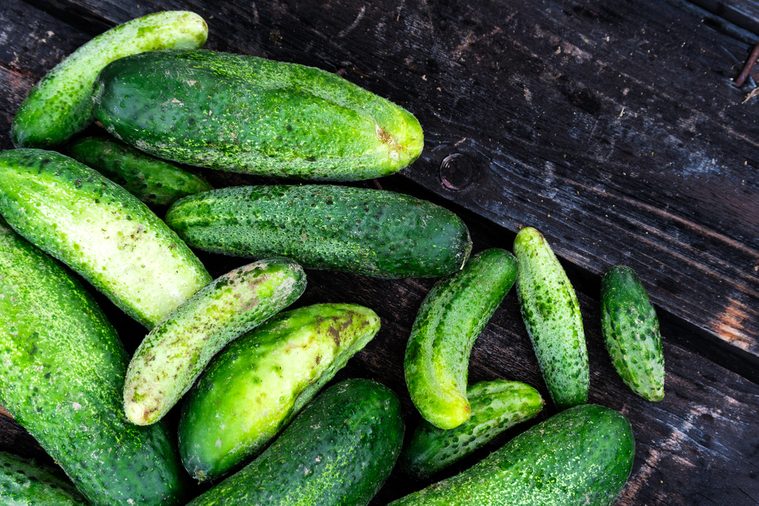
Cucumbers
Contaminated cucumbers were the source of multiple salmonella outbreaks in recent years. Unlike many vegetables, they’re rarely cooked so you’re prone to any pathogens that might be on the peel. This is true even if you don’t end up consuming the peel itself. Your knife blade picks up germs from the surface as you begin to slice and spreads them to the edible portions with every cut. “Ready-to-eat products are higher risk than those that go through an [pathogen] inactivation step,” says Sterling S. Thompson, PhD, president of B&G Safe Food Consulting, in Middletown, Pennsylvania.
How to avoid food poisoning: Be sure to scrub cucumbers with water and a produce brush whether you’re eating the peel or not. Wipe them dry and trim the bruises before you slice and serve. You also probably don’t want to eat these foods that food safety experts always avoid.
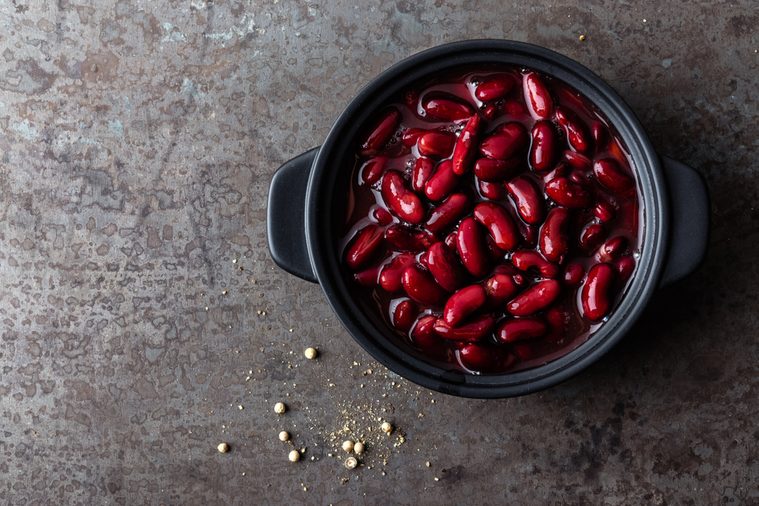
Red kidney beans
The issue with red kidney beans isn’t bacteria but a special kind of lectin. Lectin is a protein, and red kidney beans happen to have a type called “red bean lectin” (or phytohaemagglutinin). If it isn’t destroyed by heating, it can cause vomiting and diarrhea.
How to avoid food poisoning: Don’t just soak your red kidney beans. Cook them in boiling water for a good half hour, advises the FDA’s Bad Bug Book. Slow cookers won’t work because the temperature never gets high enough. Or you can play it safe by using canned kidney beans.
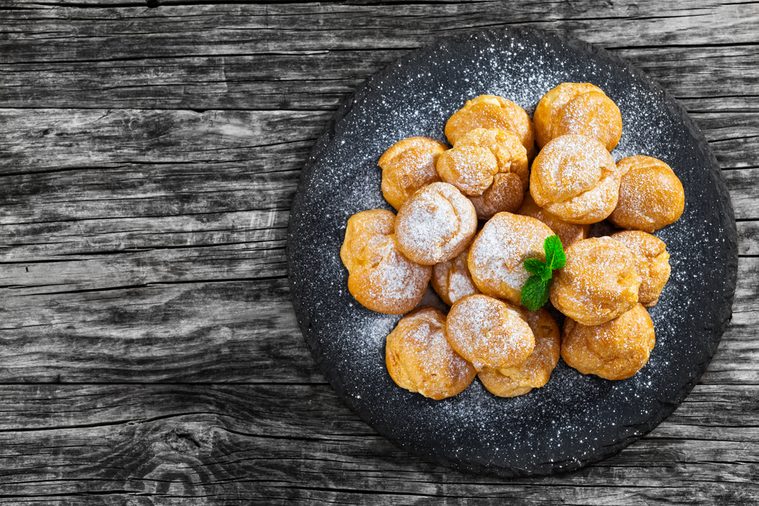
Cream-filled pastries and pies
The problem with these treats is that they’re prepared by hand and then eaten directly—without any additional baking. So you’re trusting that whoever has prepared your dessert has indeed washed his or her hands well. In tests, the nasty bacteria staphylococcus turns up on the skin of about a quarter of the population. This means they can end up in your pastries. And you still face the bugs that can grow in improperly stored dairy if there’s no baking, notes Thompson.
How to avoid food poisoning: If a cream puff craving hits, make sure you’re buying from a reputable, clean place that’s regularly inspected and certified, says Diez-Gonzalez. While you’re thinking about the foods you should probably stop eating, make sure you also know about these foods you should never eat raw.
